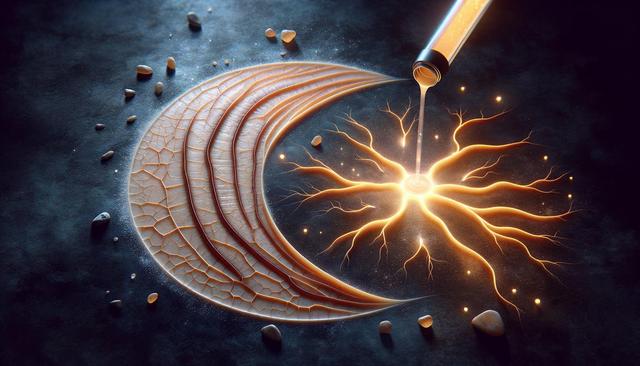Understanding Pregnancy Stretch Marks
Stretch marks are a common skin concern during and after pregnancy. These streaks or lines typically appear on the abdomen, thighs, hips, and breasts due to rapid stretching of the skin as the body changes. Pregnancy stretch marks are often a result of hormonal fluctuations and the breakdown of collagen and elastin fibers under the skin. While they are not harmful or painful, many individuals seek solutions to reduce their appearance for cosmetic reasons. It’s important to understand that genetics, skin type, and the rate of weight gain can influence whether or not stretch marks develop.
Some typical features of pregnancy-related stretch marks include:
- Initial red, purple, or pink color that fades over time
- Indented texture along the skin
- Appearance during the second or third trimester
While creams may help hydrate the skin and reduce irritation, their ability to significantly fade stretch marks is limited. This is why many turn to more advanced treatment options for noticeable results.
Prevention Tips During Pregnancy
While not all stretch marks can be avoided, taking preventive measures during pregnancy can reduce their severity. A consistent skincare routine and healthy lifestyle choices play an essential role in maintaining skin elasticity. Here are some tips that may help minimize the appearance of stretch marks:
- Stay hydrated by drinking plenty of water to keep skin supple
- Use moisturizing creams or oils rich in vitamin E, shea butter, or cocoa butter
- Maintain a gradual and healthy weight gain
- Consume a balanced diet rich in vitamin C, zinc, and protein to support skin health
Gentle massage of the skin with nourishing oils promotes circulation and may contribute to improved skin resilience. However, it’s important to remember that even with diligent care, some individuals may still develop stretch marks due to genetic predisposition or other uncontrollable factors.
Laser Stretch Mark Removal: How It Works
Laser therapy has become one of the most sought-after options for reducing the appearance of stretch marks, especially those caused by pregnancy. The procedure involves targeting the affected area with light energy, which stimulates collagen and elastin production in the skin. Over time, this can lead to smoother, more even-toned skin and a noticeable reduction in discoloration and texture irregularities.
There are different types of laser treatments available, including:
- Fractional CO2 laser for deeper scars and older stretch marks
- Pulsed dye laser for red or inflamed stretch marks
- Erbium laser for precise resurfacing and minimal downtime
The best laser stretch mark removal cost can vary based on location, clinic reputation, and the size of the treated area. Most individuals require multiple sessions for optimal results, and while laser therapy is generally safe, consultation with a qualified provider is essential to determine suitability and expected outcomes.
Other Stretch Mark Removal Treatments
While laser therapy is a prominent solution, it’s not the only method for addressing pregnancy stretch marks. Several other treatments offer varying levels of effectiveness depending on skin type, severity of the marks, and personal preferences. Among these options are:
- Microneedling: Stimulates collagen production using small needles
- Chemical peels: Exfoliates the outer skin layers to improve tone
- Radiofrequency therapy: Uses heat to tighten the skin and build collagen
- Topical retinoids: May help improve early-stage stretch marks (not recommended during pregnancy or breastfeeding)
Each treatment comes with its own set of considerations including cost, recovery time, and potential side effects. A personalized consultation with a dermatologist or skincare specialist can help identify the most appropriate course of action based on individual needs and skin condition.
What to Expect After Treatment
Post-treatment care is a crucial component of stretch mark removal success. Whether opting for laser, microneedling, or another procedure, proper aftercare ensures optimal healing and results. Most treatments require minimal downtime, but patients may experience temporary redness, swelling, or mild discomfort following each session.
To support the healing process and enhance outcomes, consider the following:
- Avoid direct sun exposure and use sunscreen diligently
- Apply recommended soothing creams or ointments as directed
- Follow the provider’s instructions regarding skincare routines
- Maintain realistic expectations—results improve over weeks or months
It’s also important to remember that while treatments can significantly reduce the appearance of stretch marks, complete removal is unlikely. However, with the right approach, many individuals achieve smoother skin and improved confidence in their appearance.
Conclusion: Choosing the Right Stretch Mark Removal Path
For individuals seeking to address pregnancy stretch marks, understanding the available options is the first step toward effective treatment. From preventive care during pregnancy to advanced treatments like laser therapy, each method offers its own benefits. Exploring the best laser stretch mark removal cost and comparing it with other non-invasive procedures can help you find a solution that fits your goals and budget. Consulting with a qualified skincare professional ensures personalized care and sets the foundation for long-term skin health. Whether you’re dealing with recent marks or older scars, there are pathways to smoother, more confident skin.


